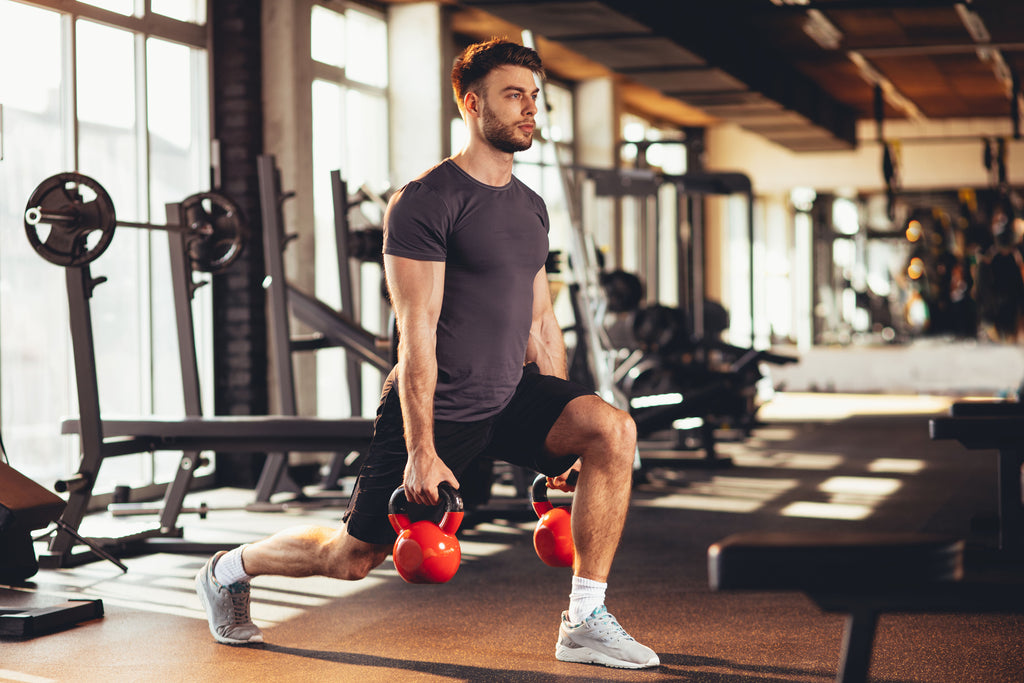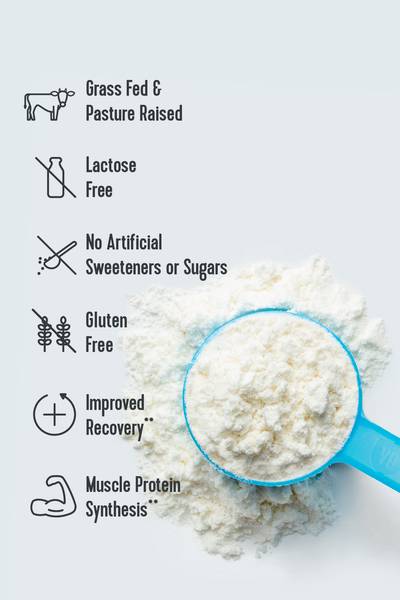Getting in solid leg workouts every week is important to help you reach your fitness goals. One of the great things about leg workouts is that you can see gains, even if you’re only training at home with body weight.
But, if you're tired of pumping out basic squats a few times a week, we hear you. So, trainer Ray Bass, NASM, provided Lively with everything you need to know about leg workouts, plus an exclusive workout to take your leg day to the next level.
Vital Note: This article has been made available for informational and educational purposes only. It is not intended to be a substitute for professional medical advice, diagnosis, or treatment. Always seek the advice of your physician or another qualified health provider with any questions you may have regarding a medical condition. Your licensed healthcare professional can best provide you with the diagnosis and treatment of any medical condition and assist you as well in deciding whether a dietary supplement will be a helpful addition to your regimen.

What is the best workout for legs?
"The best exercises are the fundamental ones: squats, lunges, bridges and deadlifts," says Bass. Once you've got the basics down, you can try out variations of those exercises, or build on them by adding weight.
The best thing about these foundational exercises is there are so many variations of each. For example, once you master a regular squat, you can incorporate a sumo squat, goblet squat, pistol squat or split squat — the list goes on.
"In general, though, squats, lunges, bridges, and deadlifts are the categories I pull from when putting together a lower body workout," Bass says.
How many times a week should you do leg workouts?
Your training plan depends on your goals. To gain muscle, Bass suggests doing lower-body targeted workouts three times per week, for anywhere from 15 minutes to an hour, depending on your fitness level and what else you plan to do at the gym. Your goals and fitness levels will also determine how many workouts you should do on leg day.
"If you're new to strength training, I encourage you to start slow with one or two non-consecutive days a week for a few weeks and eventually work up to three," Bass says.
For overall health, Bass suggests strength-training at least two days a week for 30 minutes each. And you have many options — you could split those days into one upper-body and one lower-body session, or you could do two full-body strength workouts (where leg exercises would be a part of both workouts).
And, the U.S. Department of Health and Human Services physical activity guidelines suggest at least 150 to 300 minutes a week of moderate-intensity, or 75 to 150 minutes a week of vigorous-intensity aerobic physical activity.
Keep in mind, your overall calorie and protein intake also play a role in your ability to gain muscle, so it's best to do your research or talk to a registered dietitian if you have lofty muscle gain goals. Every person's body responds differently to workouts and diet changes!
Build Lower-Body Strength With This Leg Workout

How to do it:Perform 10 reps of each move. Complete the circuit 3 times. You'll need a set of dumbbells (or other weight such as a kettlebell or medicine ball).
Each move can be modified with body weight if necessary. As you progress and get stronger, perform 12 reps of each move and complete the circuit 4 to 5 times.
Front Squat
Stand with feet hips-width apart, holding one dumbbell in each hand. Rest one dumbbell on each shoulder. Initiate the movement by sending the hips back as if you’re sitting back into a chair. Bend knees to lower down as far as possible with chest lifted in a controlled movement. Keep lower back neutral. Press through heels to stand back up to starting position. Repeat.
Reverse Lunge
Stand with the feet about hip-width apart, holding a dumbbell in each hand at your sides. Slowly step backward with the left leg. After the left foot hits the ground, push back into the right hip to slowly lower the left knee toward the floor while keeping the chest raised. Press right foot into the ground as you bring the left leg forward to return to standing.Complete 10 reps on each leg.
Deadlift
Stand with feet shoulder-width apart, maintaining a slight bend in your knees, with a kettlebell or vertical dumbbell in front of you. Hinge forward at the hips, keeping your spine straight as you push your hips directly behind you. Grip the weight in both hands in a palms-down grip and squeeze the handle in both hands to maintain a firm grip. To lift the kettlebell, push your feet into the floor and press your hips forward while pulling your knees back, engaging hamstrings and adductors.Come up to a tall, standing position with the kettlebell resting on the fronts of your thighs at approximately waist height. Keep spine long as you hinge forward to perform each repetition, generating force to lift the kettlebell by moving the hips forward to engage glutes.
Calf Raise
Stand feet hip-width apart with toes pointed forward. Hold one dumbbell in each hand at your sides. Press through the balls of your feet and lift your heels. Slowly lower to starting position. Repeat.
Glute Bridge
Lie faceup with knees bent and feet flat on the floor. Place the dumbbell on your lower abs. Engage your glutes and brace your core to lift hips up to the ceiling. Pause at the top, then slowly lower down to return to starting position. Repeat.
Related Articles
Can leg workouts at home be effective for building strength?
For the majority of people, yes.
"I say that because if you are a serious bodybuilder or strength training athlete, your home workout equipment may not be challenging enough for you," Bass says.
In general, though, yes, you can build strength at home by doing both bodyweight leg workouts and leg workouts with weights.
What is a good leg day workout?
You might be asking yourself "What should I do for leg day?" A good leg day workout hits the major muscles in your lower body, namely your quads, glutes, hamstrings, and calves. The best way to do this is to focus on compound exercises (movements that involve multiple muscles or muscle groups).
"When I’m building a workout, I think of my big four (squats, deadlifts, lunges, and bridges) and also try to think in terms of push and pull," says Bass. "If you can hit the big four categories and then fill in with exercises that involve pushing and pulling, you've got a solid leg workout on your hands."
Can you build big legs with dumbbells?
When you think of dumbbells, you probably think upper-body workouts, But you can use them for lower body, too.
"Dumbbells add resistance to exercises, so yes, they can help you build your strength," Bass says.
If you strength train consistently, overtime your muscles will become stronger, so there will come a time when you need to get heavier dumbbells to get the same level of challenge. For those new to strength training, Bass recommends investing in one pair of medium weight dumbbells (not easy, not impossible), and seeing if you can stick to a consistent routine for a month before buying a ton of expensive equipment.















